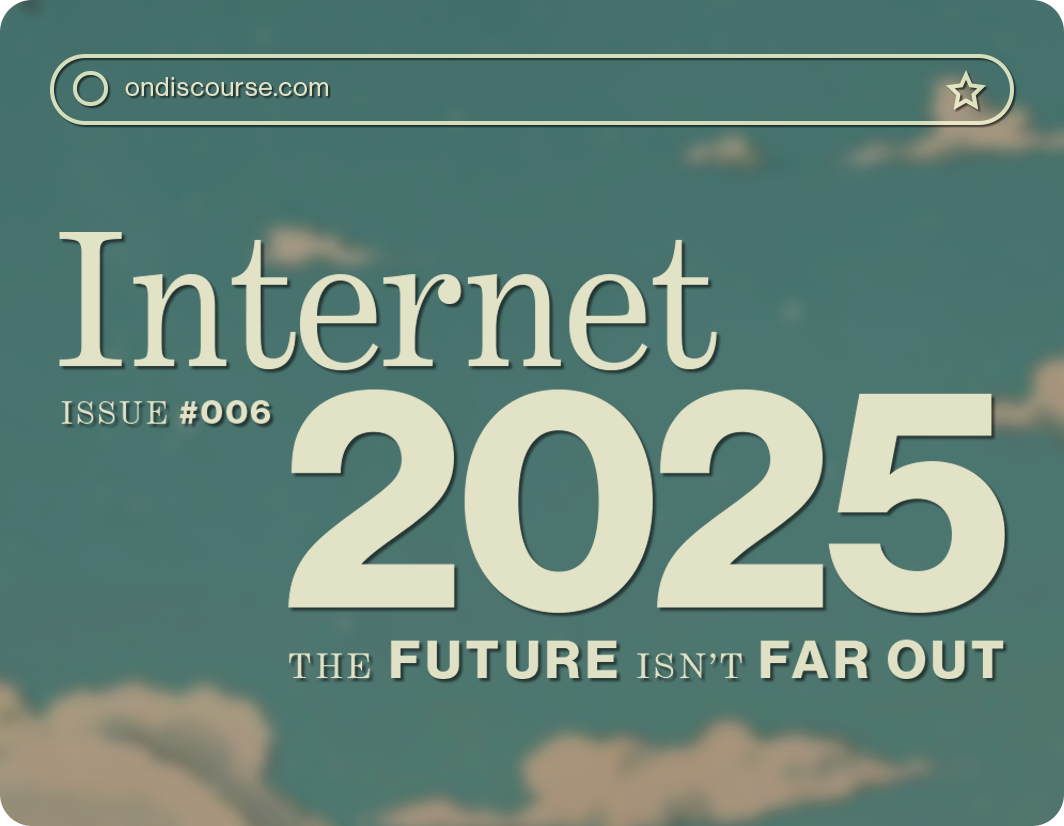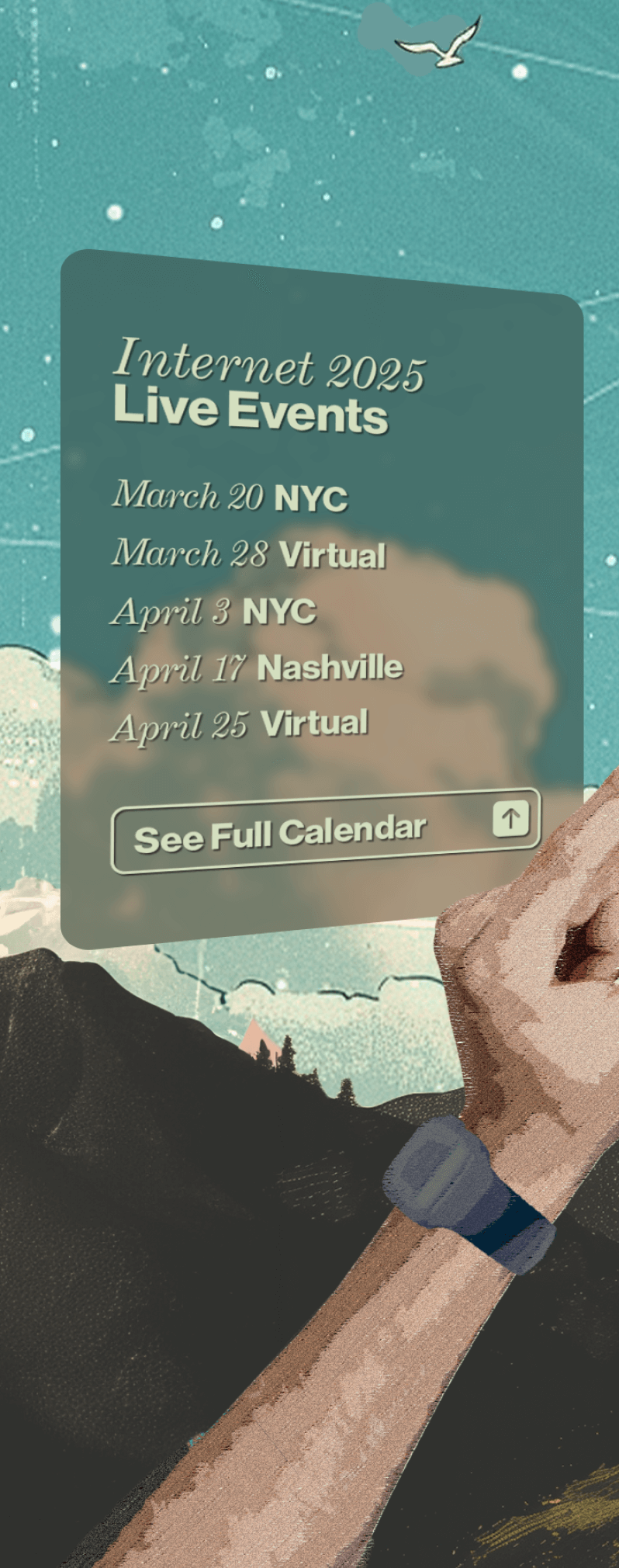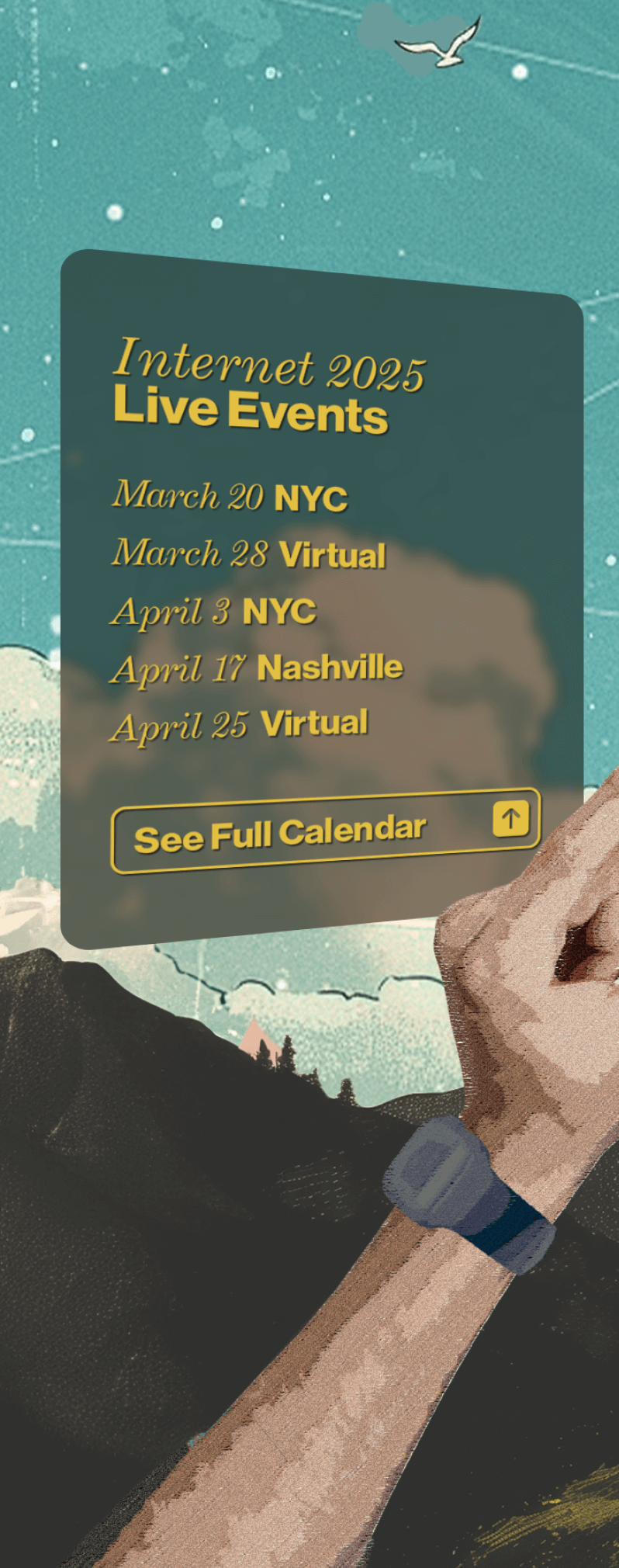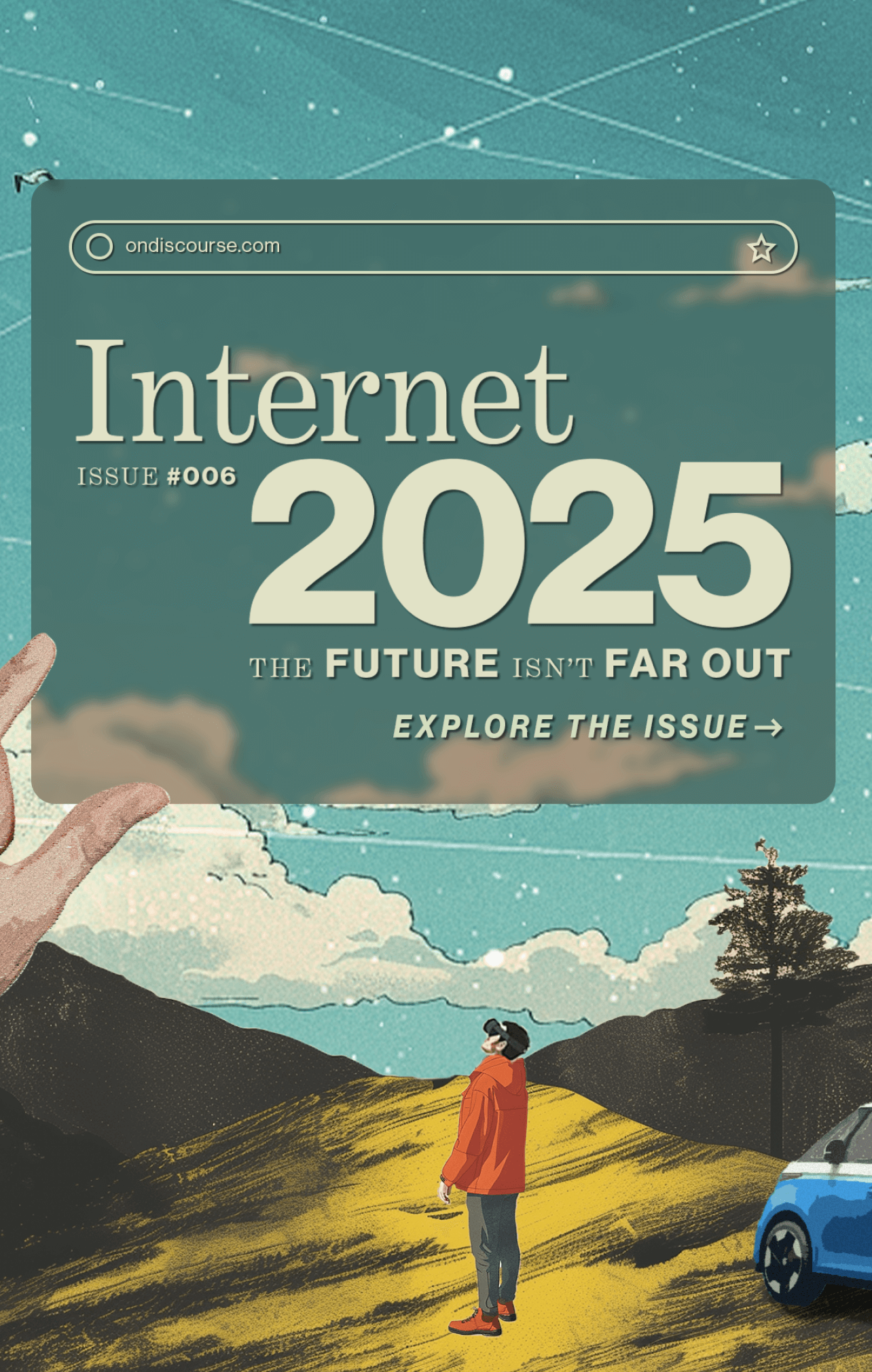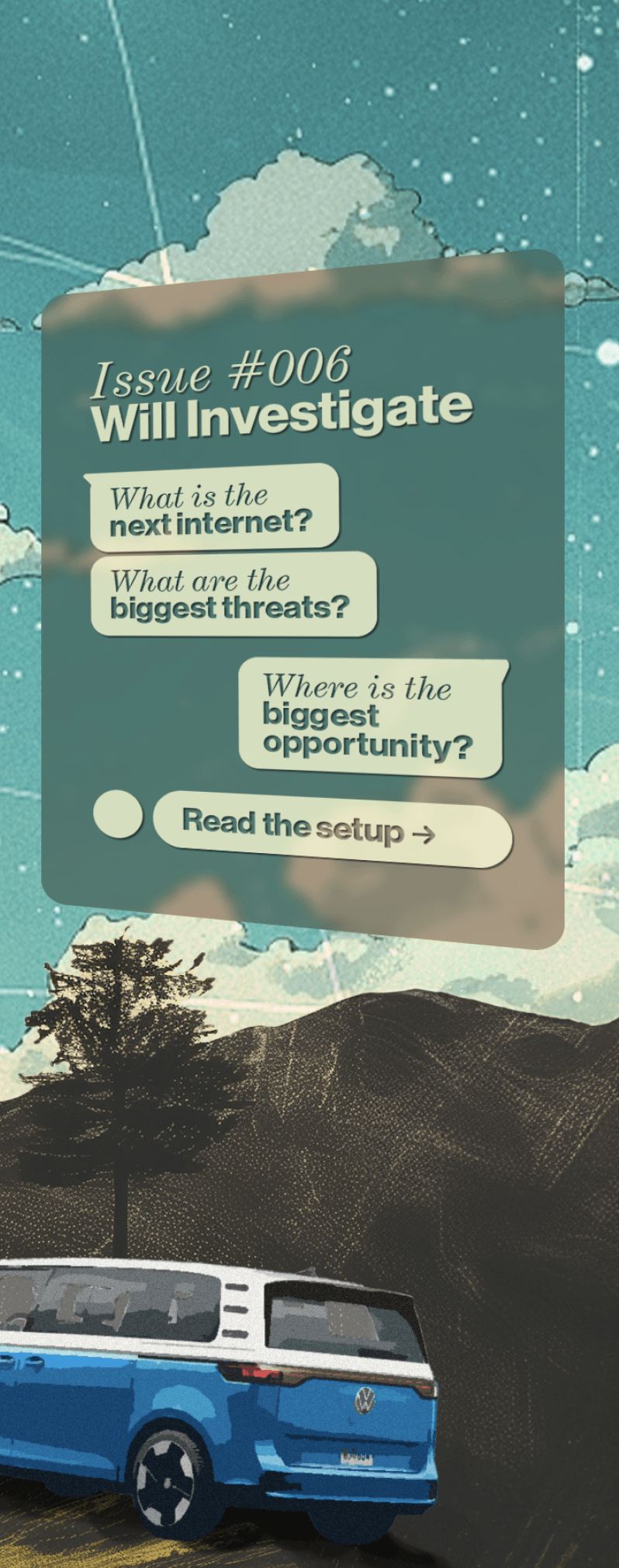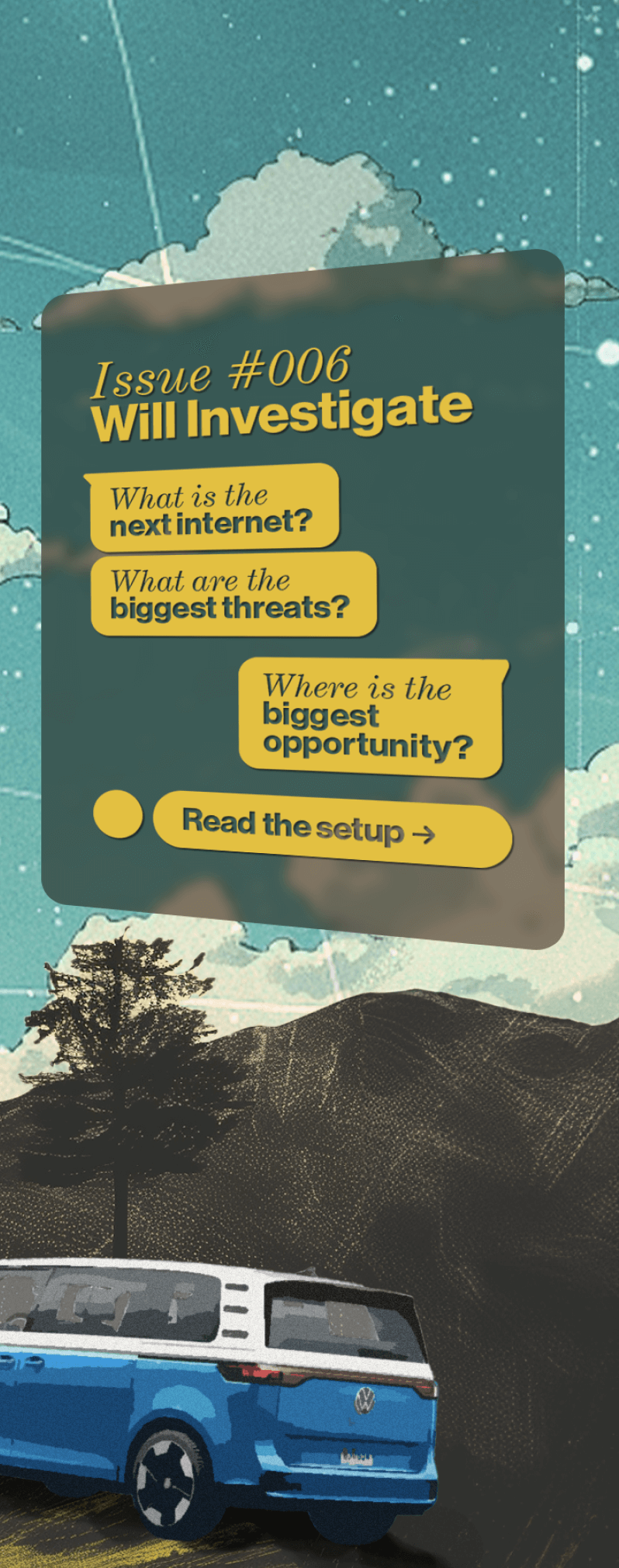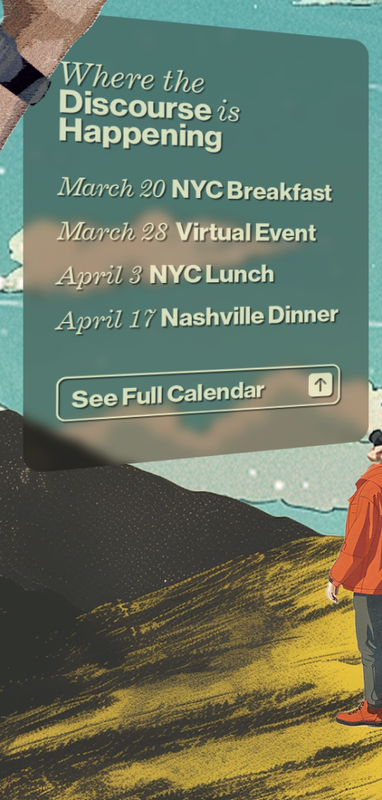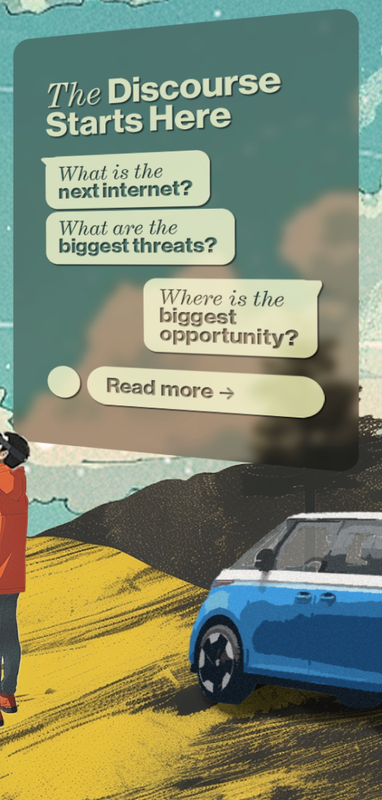AI Isn’t
Coming to Save
Digital Life
Editor’s note: The perpetual optimism of technological innovation belies the gritty reality of internet culture. Before we get too excited about Internet 2025, our Head of Content and Product wanted to set the record straight about where we are now and what we should not expect to see in the next internet. Is he telling the hot new internet to get off his proverbial lawn?
This post was written by human Anthony DeRosa and narrated by AI Anthony DeRosa (powered by Wondercraft.ai).
In an era dominated by digital abundance, where emails, photos, and various forms of digital clutter have become the norm, many look towards artificial intelligence (AI) as a silver bullet. However, the solution to digital hoarding—a behavior deeply embedded in our interactions with technology—is not as straightforward as deploying more sophisticated AI tools. Instead, it necessitates a shift in our digital behavior, a change in how we engage with digital content.
AI, with its promise of efficiency and automation, offers compelling solutions to manage the ever-growing piles of digital clutter. From smart email filters that prioritize incoming messages to photo management apps that organize images using facial recognition, the capabilities of AI in handling our digital mess seem boundless. However, these technological advancements, while helpful, do not address the root cause of the issue: our behavior and relationship with digital content.
Ezra Klein’s contemplation sheds light on a pervasive issue that transcends simple technological fixes. Klein introduces the concept of “shame closets” in our digital worlds—repositories where we stash away the unwieldy bulk of digital content that we accumulate, much of it unnecessary, leading to a chaotic and overwhelming digital existence. This metaphor strikingly encapsulates the disarray that defines much of our online lives today, from overflowing email inboxes to unmanageable photo collections and beyond.
What was once seen as a digital liberation has morphed into a form of digital bondage, where the sheer volume of data—emails, photos, messages—has become too daunting to manage effectively.
Klein’s reflection on Gmail’s evolution is particularly poignant. The initial promise of Gmail, with its then-unprecedented storage capacity, symbolized a new era of digital abundance. Yet, this very abundance, facilitated by the plummeting cost of digital storage, has become a double-edged sword. What was once seen as a digital liberation has morphed into a form of digital bondage, where the sheer volume of data—emails, photos, messages—has become too daunting to manage effectively.
The essence of the problem lies not in the lack of tools to manage digital clutter but in our approach to digital consumption and retention. We live in an age of digital abundance, where the cost of storing digital information has become negligible, leading to the indiscriminate saving of emails, photos, and files. This behavior is further exacerbated by FOMO anxiety, compelling us to subscribe to countless newsletters, capture endless photos, and download numerous files with the hope of revisiting them someday—a day that seldom comes.
Enter the concept of digital minimalism, a philosophy that encourages a more intentional approach to technology usage, focusing on quality over quantity. Apps like Hey, which force users to make deliberate choices about what to focus on, embody this philosophy. They challenge the user to confront their digital habits, asking them to decide what truly deserves their attention and what can be let go. This approach aligns with the values of ON_Discourse, emphasizing the importance of conscious engagement over passive consumption.
AI can provide the tools to assist in our digital decluttering efforts, but it cannot make the fundamental choices for us.
Adopting such a mindset requires more than just the use of sophisticated apps; it demands a cultural shift towards valuing digital space as much as we value physical space. Just as one would declutter their home to create a more harmonious environment, the same principle should apply to our digital lives. By fostering a culture of digital minimalism, we not only alleviate the stress associated with digital clutter but also open up space for meaningful digital engagement.
The role of AI in this cultural shift is supportive, not central. AI can provide the tools to assist in our digital decluttering efforts, but it cannot make the fundamental choices for us. The decision to unsubscribe from a newsletter, delete redundant photos, or archive old emails remains human, grounded in our ability to discern what holds value. As we navigate the intersections of technology with various sectors, it becomes clear that the solution to digital hoarding lies not in more technology, but in a renewed understanding of how we interact with the digital world.
AI and apps like Hey offer valuable assistance in managing digital clutter, but they cannot save us from it. The true resolution lies in changing our digital behaviors, adopting a minimalist approach, and making conscious choices about what deserves our attention. This behavioral shift, supported by technology, can lead us to a more manageable and meaningful digital existence.

